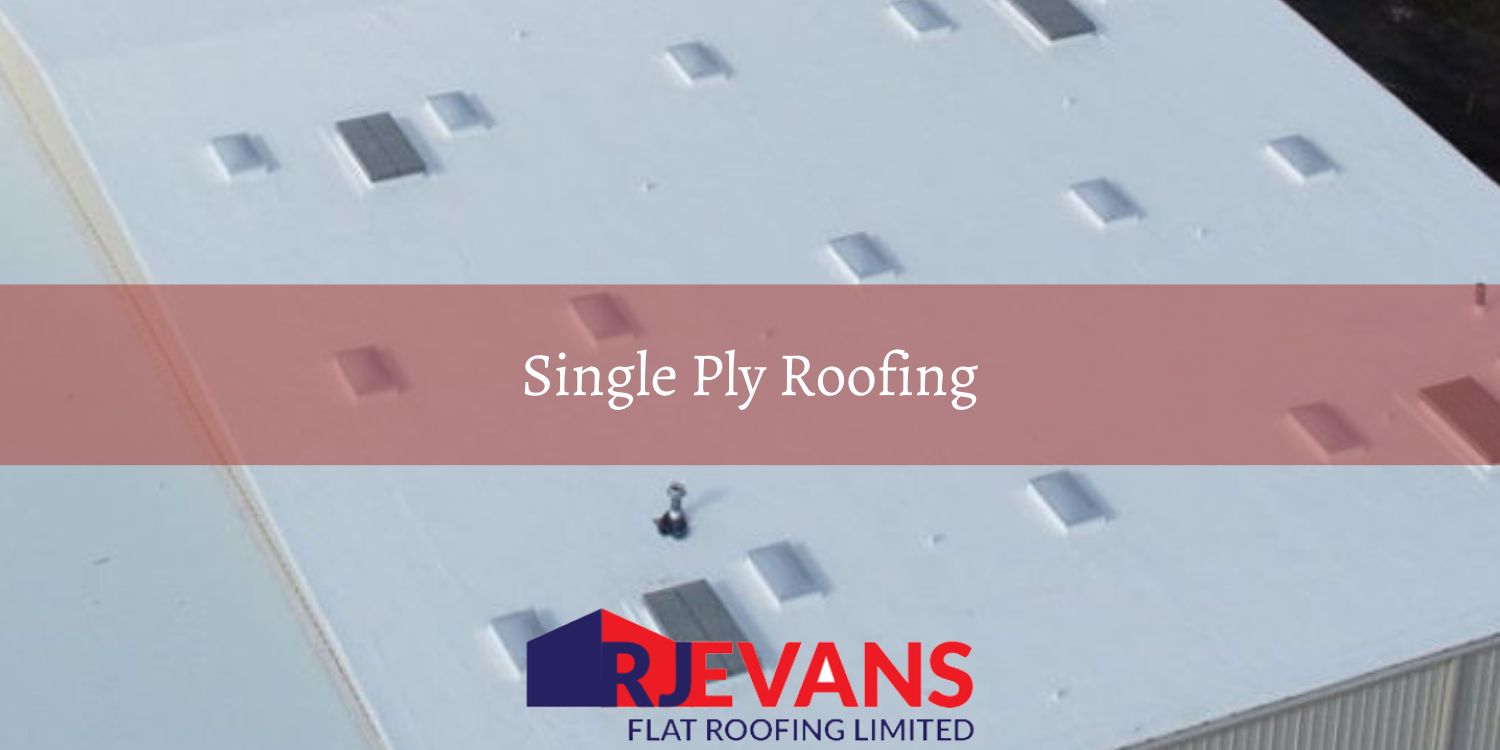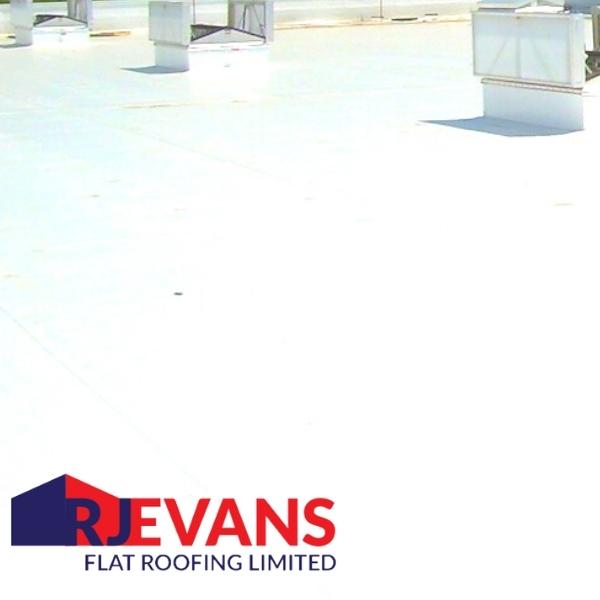I agree Our site saves small pieces of text information (cookies) on your device in order to deliver better content and for statistical purposes. You can disable the usage of cookies by changing the settings of your browser. By browsing our website without changing the browser settings you grant us permission to store that information on your device.

Single-ply roofing systems consist of a single layer of synthetic or rubber-like material, which serves as both the roofing membrane and the weatherproofing barrier. Single ply is most often used for the roofs of commercial and industrial buildings. There are a variety of single-ply roofing membranes, with the most common being thermoplastic olefin (TPO), polyvinyl chloride (PVC), and ethylene propylene diene monomer (EPDM). All of these materials are lightweight and flexible. They are also highly resistant to UV radiation, chemicals, and temperature fluctuations. Single-ply roofing systems are normally installed in a fully adhered, mechanically fastened, or ballasted fashion. Single ply systems are known for their durability and energy-efficiency. They are also extremely cost effective for large commercial roofs.
RJ Evans provide a full range of single ply roofing services. Our highly-experienced team covers all of London and the South of England, and further afield for select projects. All of operatives are fully accredited flat roof specialists. If you would like a quotation or any information on single ply membranes please get in touch with us or call us now on 01277 375 511.

A single ply system is made from synthetic polymer. This provides waterproofing in a single layer of sheeting. Single ply systems are a popular choice for flat roofs. They perform excellently in European climates (dealing with natural elements and weather conditions which vary considerably). A single ply roofing membrane also works well in projects where weight and load bearing is an important consideration. It is a versatile system capable of performing on large commercial roofing projects, green roofs and residential flat roofs. Perhaps the most desirable characteristic of this type of system is the speed of installation which makes it very cost effective. There are two main types of single ply roofing membrane; synthetic rubber and thermoplastic.
EPDM (Ethlyene Propylene Diene Terpolymer) is a type of synthetic rubber membrane used for its durability. An EPDM membrane is normally fully cured when it arrives to site which causes a faster installation. The size of the EPDM sheets used for commercial roofing can be from 7.5 to 50 feet. The thickness of these sheets come in 2 size; 4.5 cm and 6 cm. As it is a system which is applied in sheets the seams of EPDM roofing must be adhered with a tape or a liquid adhesive. With roofs which have complex details the lifespan can vary significantly. The better the quality of contractor used the longer the roof will last. It must be emphasised complex details must be finished water tight or the roof will have problems with water ingress. The life expectancy of an ethylene propylene diene terpolymer roof is 20-30 years if the installed and maintained correctly.
PVC (Polyvinyl Chloride) is made up of ethylene and chlorine. These are derived from processed petroleum or natural gas and salt. A main benefit of PVC roofing is the durability it offers. With a proven track record going back to the 1970’s, PVC membranes are one of the more proven roofing systems. It can last up to 25 years. The actual life span of this system is dependent on the quality of the contractor who installed the PVC roof and the amount of sunlight it is exposed to.
The more UV rays the roof is exposed to the faster it will degrade. Obviously, this translates into a shorter life span. A regular maintenance plan can really help extend the lifespan of a PVC roofing system. The points of the roof which will break down first due to excessive UV rays are normally the same which become vulnerable to leaking. Other advantages of PVC roofing include; a very fast installation process, ease of repairs, cost effective method, good thermal performance and no problems with cold bridging.
TPO (Thermoplastic Polyolefin) is a polymer single-ply membrane. Hot air is used to weld the seams. This system has been used since the 1980’s and has proven to be a very poplar system to use for roof waterproofing. Compared to a PVC single ply membrane TPO is not as effective at withstanding weathering and punctures. However, where it does excel is in it being an environmentally friendly system which can be recycled.
It also can reduce UV radiation due to having a reflective surface. This results in energy savings due to keeping the temperature of the building below cooler. The smooth surface of TPO is excellent at resisting dirt build up which translates to few maintenance costs through the roofs service life. The main weaknesses of TPO roofing are is it is not designed to take heavy foot traffic, it is prone to suffer from cracks after approximately 15 years and is very dependent on the quality of the contractor carrying out the installation when the roof has complex detailing.
Single ply roofing popular due to being able to increase the speed at which construction projects are finished. The reason for this is single ply membrane are lightweight, cost effective and relatively easy to install. Single ply can be used on a variety of different roofs from large commercial roofing projects through to green roof systems and domestic properties.
The systems are typically installed using hot air welding techniques. It is mechanically fastened or bonded with adhesive. The result is a roofing system which is durable, fire resistant and able to perform in fluctuating weather conditions. It is paramount to ensure a quality installation with this type of roofing system as a poor install will make all of the benefits redundant.
• Single Ply Is Very Durable Which Is Why They Are So Popular. It can offer many advantages and can be easily protected especially when handling roof loads like plant etc. Single ply is very resistant and can handle climate changes very well. Damage such as tears and punctures are easily patch repaired. It is not heavy, typically 2-3kg per square metre and therefore does not impact hugely on roof design..
• Single Ply Membranes Are Cost Effective. Large areas can be installed relatively quickly. The product is not overly expensive and as long as it is installed correctly it is a good solution.
• Single Ply Has A Simple Installation Process. Laps are heat welded and there are many preformed roof items such as corners, outlets etc. It is a fast installation compared to some systems like asphalt for example and 200m2 per day is easily achievable if the roof design permits.
• Single Ply Membranes Have A Long Track Record. First used as far back as the 1930’s. Modern single ply typically can function well for up to 25 years. This can be drastically reduced if the roof is under strong UV attack constantly.
• Single ply is a lightweight product. 2/3kg/m2 is a typical weight. This means that roof loading at design stage are easily factored into the overall design.
• Available in a range of colour finishes available. Typically, in the UK a light or dark grey is most used. In Europe and hotter climates whit is the preferred colour. This is more to do with stronger UV issues than decoration. Modern single ply, like liquids, can be produced in any colour.
A flat roof which is free of complex detailing would benefit most from this type of roofing system. It was originally developed for large industrial roofs with little detailing (air conditioning units, rainwater outlets etc.). It can lend itself to any roof, but if the roof is ‘busy’ (lots of complex details) installation time is greatly increased and any detail is a potential weak point.
There are a number of alternatives to single ply membranes. Flat roofing materials include; liquid, felt, asphalt and GRP. Modern waterproofing liquids stand out as the flat roof system which is the best alternative to a single ply roof. These systems are high performance, normally faster to install, cost effective and do not offer weak points such as seams (if not welded correctly these will fail over time). Single ply is a great solution, but it relies heavily on the human factor to ensure installation is correct. Most cost savings are dependant on a good contractor installing the roofing system. This is why liquid is becoming an increasingly popular alternative to single ply roofs.
If you would like advice on whether single ply is suitable for your situation, a quotation for a new roof. Or if you need any help or advice about single ply roofing services please get in touch. You can do this through our contact form or call us on 01277 375 511. One of our friendly expert team will be delighted to help you.
.